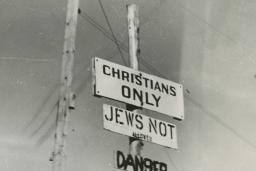Museum visitors will now have a unique opportunity to talk with Holocaust survivors and learn from those who were there.
Dimensions in Testimony (Examining the Holocaust Gallery)
Interact with Holocaust survivors using innovative technology
Fridays and Saturdays at 1:15 p.m. (English) and 2:15 p.m. (French). Times are subject to change.
Tags:
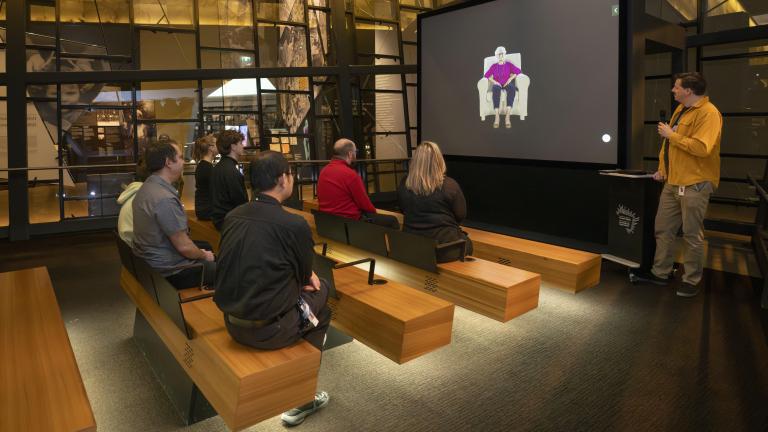
Photo: CMHR, Annie Kierans
Exhibition details
I tell my stories, my history, to bear witness. To bear witness as a tribute to my parents, to their courage, to their fate, particularly that of my father, and the rest of my family who were exterminated.
Dimensions in Testimony enables people to ask questions that prompt real‐time responses from pre‐recorded video interviews with Holocaust survivors and other witnesses to genocide. Developed by USC Shoah Foundation, the pioneering project integrates advanced filming techniques, specialized display technologies and next generation natural language processing to create an interactive biography. Now and far into the future, museum‐goers, students and others can have conversational interactions with eyewitnesses to history to get their point of view.
Through Dimensions in Testimony at the Canadian Museum for Human Rights, visitors can engage with the stories of two Canadians who survived the Holocaust. Pinchas Gutter answers in English, vividly recalling his time in Nazi concentration camps and what came next. Marguerite Élias Quddus answers in French, sharing her story of surviving the Holocaust by hiding her Jewish identity.

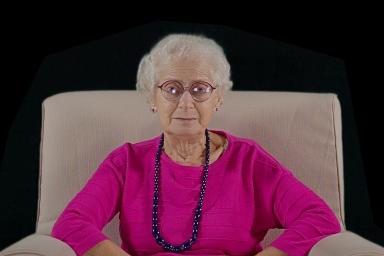
I always feel hopeful. If I wasn’t hopeful, I wouldn’t be talking to you or anybody else about my experience.
Video: Dimensions in Testimony | USC Shoah Foundation
Video transcript
Title Card:
USC Shoah Foundation
Dimensions in Testimony
Text Overlay:
Stephen Smith, Executive Director, USC Shoah Foundation:
Stephen Smith:
The Holocaust is an undeniable and horrific chapter in human history, in which 6 million Jews and countless millions perished in genocide and crimes against humanity during the Second World War.
Text Overlay:
USC Shoah Foundation has been dedicated to sharing testimonies of survivors and witnesses of genocide and crimes against humanity since 1994.
Stephen Smith:
Dimensions in Testimony is a new format of interview by which you can ask your questions of a Holocaust survivor, who has videotaped answers to many questions, so that the questions that you have will be answered directly in person, life size and [unclear]TV.
Text Overlay:
Dimensions in Testimony is a new interview technology that allows students and others to interact with survivors and witnesses of genocide, long after they are gone.
Student 1:
What was life like before the war?
Pinchas Gutter:
I had a very happy childhood. I loved to be together with my family.
Stephen Smith:
We understand very well the power of conversation between Holocaust survivors and the younger generation. We’ve seen it in our schools, we’ve seen it in our universities. That conversation, that moment of dialogue, where I ask my question and I get it answered, is just, it’s as magic in the room when that happens. And we wanted to try and find a way to preserve that as best possible. What’s wonderful about conversing with these Holocaust survivors in this interactive form is that it’s about you, about what you want to know. Conversation allows you to learn in a way that most suits your interests. And that’s where the deepest learning takes place.
Student 2:
Do you feel hope for the future?
Pinchas Gutter:
I always feel hopeful. If I wasn’t hopeful, I wouldn’t be talking to you or anybody else about my experience.
Anita Lasker‐Wallfisch:
I’m very happy that I was able to survive.
Renée Firestone:
And here I am. I was one of the lucky ones.
Stephen Smith:
The questions that students have is what’s driving the learning experience. And so we know that this is important because we’re going to enable them to be able to learn through their own curiosity. We are almost out of time to have deep conversations with Holocaust survivors. If we don’t have these conversations now, they will never take place.
Title Card:
USC Shoah Foundation
Dimensions of Testimony.
Learn more at sfi.usc.edu/dit
Location and times
Dimensions in Testimony will be offered in the Examining the Holocaust Theatre in the Museum’s gallery of the same name each Saturday in May and June at 1:15 p.m. (Pinchas Gutter in English) and 2:15 p.m. (Marguerite Élias Quddus in French). Please note these times are subject to change.
For schools
Dimensions in Testimony can now be booked as an onsite school program for students in grades 5–12 at the Canadian Museum for Human Rights. Book now.
Credits
Dimensions in Testimony was developed by the USC Shoah Foundation, in association with Illinois Holocaust Museum and Education Center, with technology by USC Institute for Creative Technologies, and concept by Conscience Display. Funding for Dimensions in Testimony was provided in part by Pears Foundation, Louis. F. Smith, Melinda Goldrich and Andrea Cayton/Goldrich Family Foundation in honor of Jona Goldrich, Illinois Holocaust Museum and Education Center, and Genesis Philanthropy Group (R.A.). Other partners include CANDLES Holocaust Museum and Education Center.
The Canadian Museum for Human Rights’ presentation of Dimensions in Testimony is also supported by the Montreal Holocaust Museum, The Asper Foundation and the Jewish Foundation of Manitoba.
Dive Deeper
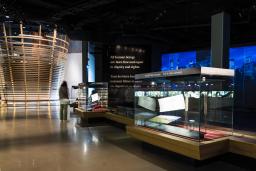
Us vs. Them: The process of othering
By Clint Curle
Explore the relationship between othering, human rights violations and the process of genocide through the lenses of the Holocaust and the Rohingya genocide.
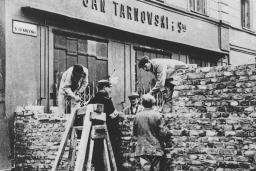
Canada, antisemitism and the Holocaust
By Jeremy Maron
Widespread antisemitism in Canada in the 1930s and 1940s kept the nation’s borders closed to Jews trying to escape the Holocaust.
